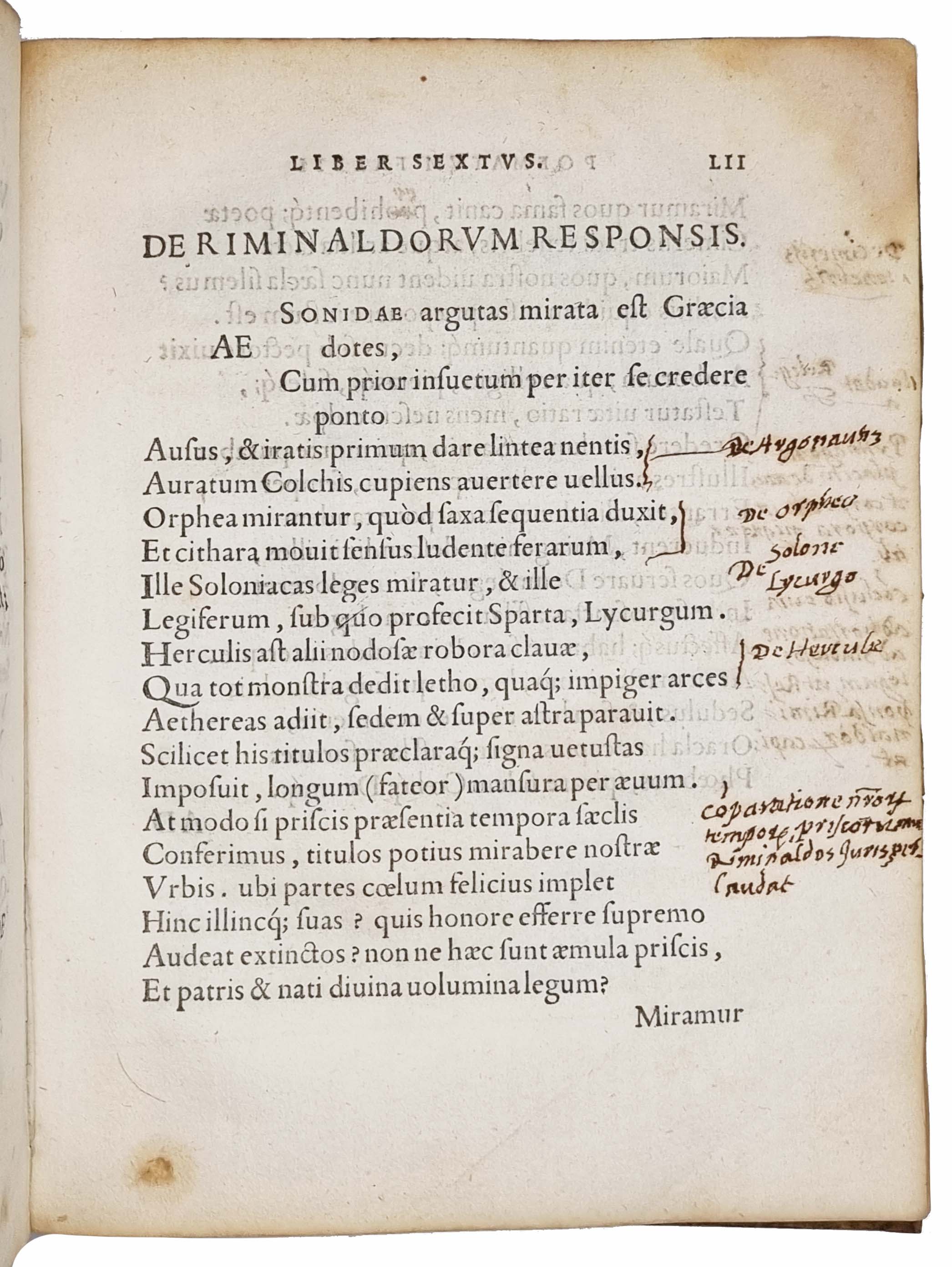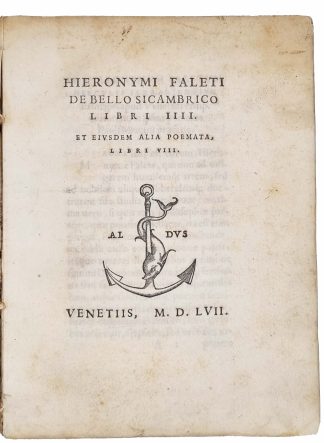FALLETTI, Gerolamo.
‘BEAU ET RARE’
De Bello Sicambrico Libri IIII et eiusdem alia poemata.
Venice, [Paulus Manutius], 1557.£1,950.00
FIRST EDITION. 4to. ff. [8], 137, [1] (errata). Roman letter. Woodcut Aldine device to title. Some age browning or yellowing, minor marginal foxing to title and few other ll., light oil stain to upper outer generally blank corner of first half and last couple of ll. A good, well-margined copy, on thick, high-quality paper, in contemporary limp vellum, traces of ties, c.1400 rubricated ms (glossed ‘Decretales’) used as spine lining, yapp edges, early ‘1557 dupl’ inked to upper cover, a bit stained and scuffed, C19 bookplate of Thomas Ashby and ms price ‘l[ire] 10’ to fly, near contemporary ms corrections, annotations and marginalia.
An attractive, well-margined copy of the first Aldine edition of this interesting collection of Neo-Latin poems, including one on the wars of Charles V in the Low Countries. Gerolamo Falletti (d.1564) studied at Louvain and Ferrara, earning the patronage of Ercole II and Alfonso II d’Este. He was later a diplomat for the Serenissima, one of his duties being a visit to Poland after the death of Sigismund I. Dedicated to Ercole II, ‘De Bello Sicambrico’ is a poetic account in 4 books of the siege of Guelders by Charles V in 1542-3. Imbued with humanistic classicism and Virgilian influences, the poem is based on Falletti’s first-hand account of the Emperor’s attacks against Antwerp and other cities, he took part in the defence of Louvain whilst a student there. The remainder of the collection includes dozens of poems addressed to major personalities of the time, especially Venetian, whom Falletti knew, and concerning specific occasions. For instance, the author Bartolomeo Ricci (who published ‘De imitatione’ with Manutius), Francesco Venier (for whom he provides an obituary), Olimpia Colonna (wife to the Venetian aristocrat Enea Martinengo), and members of the Este family.
The near contemporary annotator glossed 5 poems in Books VI and VII, and corrected Latin typos throughout. The first annotated poem concerns probably Hippolitus Riminaldus, a Ferrara jurist; the following three, the Flemish poet Nicolaus Grudius, and the fifth, Alfonso d’Este. The annotator clarified the classical references in the text (to the Argonauts, Orpheus, etc.), as well as rhetorical techniques employed by Falletti (e.g., ‘comparatio’, ‘hortatio’, ‘prosopopeia’).
This copy was in the library of the famous British archaeologist and bibliophile Thomas Ashby (1874-1931), also the first student and honorary librarian of the British School in Rome.
Renouard 303:13: ‘beau et rare’; Ahmanson-Murphy 523; USTC 828686; Brunet II, 1172: ‘peu commun’. D. Sacré, ‘Le poète Néo-Latin Girolamo Falletti’, Humanistica Lovaniensia, 41 (1992), pp.199-220.In stock






